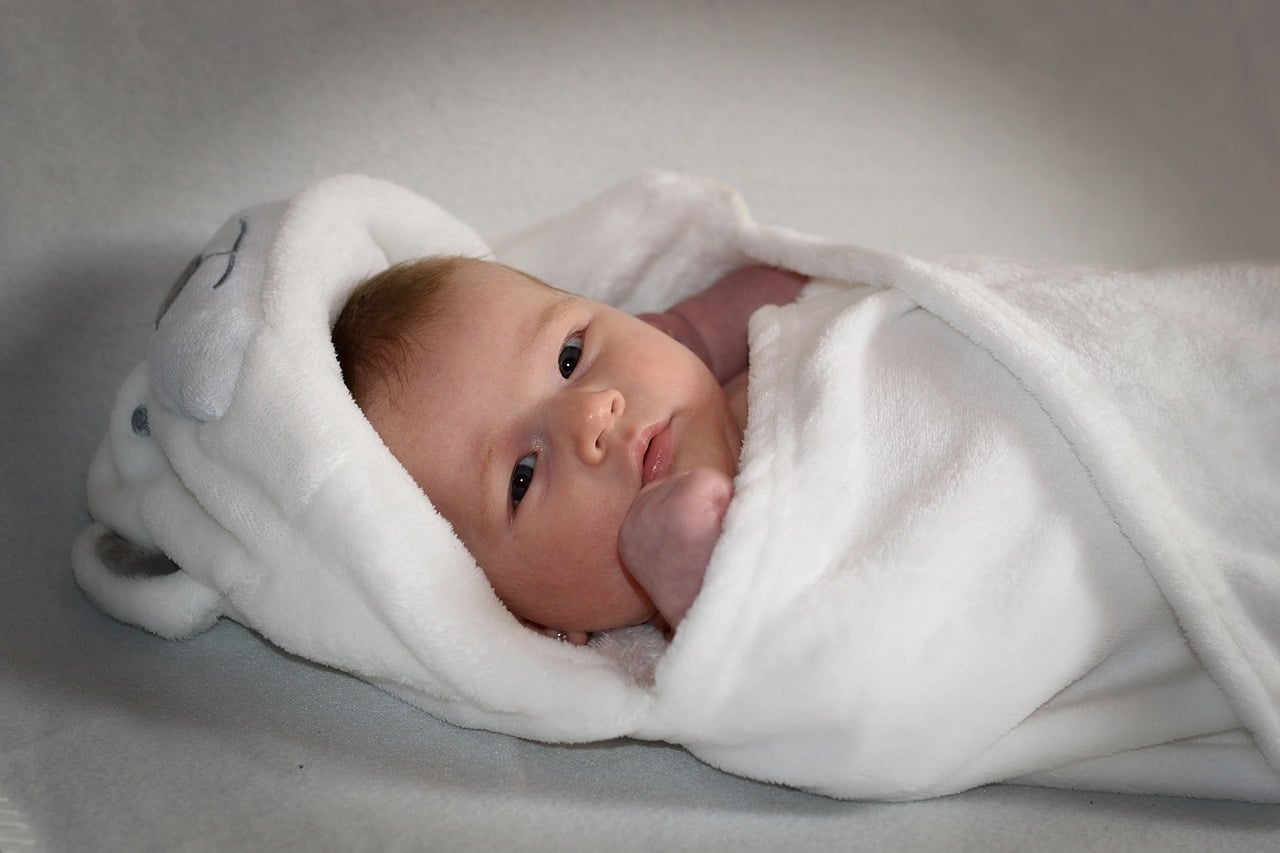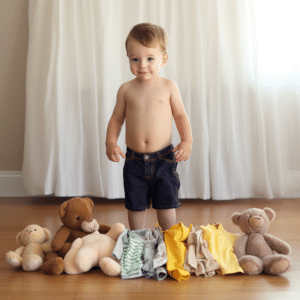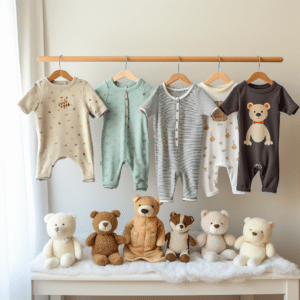
Managing Newborn Clothing: When to Size Up
Newborn clothing lifespan, New parents naturally want to swaddle their babies in the cutest, smallest clothes. However, as any experienced parent knows, babies outgrow their newborn outfits quickly.
How Long Do Babies Wear Newborn Clothes?

Generally, newborn garments fit little ones up until three or four weeks of age. Full-term babies born of average weight tend to fit into such clothing for two to six weeks, although this can fluctuate.
These outfits can max out at 10 or 11 pounds and 20 inches in length. Alternatively, if an infant is larger than that, their parents might choose to bypass newborn sizes in favour of 0-3 months. To get the best possible fit for your baby, it’s usually advisable to swap out the newborn pieces for clothing from the next size up.
Related: DROPPED PHONE ON NEWBORN HEAD
Additionally, European size 60 (US 3-6 months) often works best for babies weighing 12lbs or more. For preemies – babies born prematurely – newborn clothing could be fitting for a longer period provided that they are lighter than 17 inches long and 5lbs.
How Much Newborn Clothing Should You Buy?
Newborn clothing lifespan, For any new parent, stocking up on the perfect volume of baby apparel will be challenging. How much do you really require for your little one? Before buying for your bundle of joy, consider this – how much laundry are you willing to take on? Certainly, newborns develop quickly, but they can generate considerable mess. That’s why it pays to have extra onesies and sleepers at your disposal.
The Lifespan of Newborn Clothing
Though newborn clothing is typically designed to fit babies up until they are 8-10 pounds or around two to four weeks old, this lifespan can fluctuate tremendously based upon a range of conditions. Infants who are born smaller or larger than average may quickly outgrow their garments or take more time than expected. Furthermore, some babies may abruptly grow in spurts which could render their current wardrobe too tight.
Onesies and sleepers are usually more flexible compared to outfits with separate tops and bottoms. Garments made from stretchy or adjustable fabrics can also be useful for the long run as they provide room for further size alterations.
Related: CAN BOTH PARENTS SLEEP WITH A NEWBORN?
In terms of maintenance, if you want your baby’s clothes to remain their original condition, it is wise to limit the usage of heat when cleaning them. Extremely hot water temperatures or drying them on high heat can cause layers of shrinkage or tearing of sensitive materials. Additionally, fabric softeners or dryer sheets ought to be avoided since they can bring about irreversible wear and tear. It is suggested that newborn clothing should be washed in a gentle detergent and tumbled on a gentle cycle before they are hung up to dry whenever possible.
Signs It’s Time For a Size-up

As babies grow, their clothing needs become more pressing. To ensure they’re comfortable and able to move with ease, here are some signs that it’s time to switch up the wardrobe: tightness, length, weight, diaper leaks, difficulty dressing, and age.
If your infant’s garments are feeling too snug and restricting movement or if they’ve outgrown their current size by age – it’s probably a good indication that you should be investing in something bigger. Keep an eye on weight gain too, so you can predict when a switch is necessary. Dressing your baby should be easy – not a frustrating hassle – so be sure to keep size in check.
FAQs:
Q. Can babies skip newborn sizes altogether?
A. Yes, depending on their size at birth and growth rate, some babies may go straight into 0-3 month or larger sizes.
Q. Should I buy a lot of newborn clothes?
A. It’s best to start with a few outfits in newborn size and wait to see how quickly your baby grows before investing in a large wardrobe.
Q. How do I know if a onesie is too small?
A. Look for signs like the fabric pulling or stretching, the diaper area seeming too tight, or the neckline or armholes digging into the baby’s skin.
conclusion
As endearing as those innocent newborn outfits appear, we must acknowledge the fact that babies grow at a rapid rate. To make the most of their cuteness while it remains, it is essential to understand how long newborn clothing lasts and when it is time to move up in size. With the tactics articulated in this piece, you can ensure your baby looks delightful and feels cozy, whether they are still wearing newborn wardrobes or have progressed to more substantial garments.